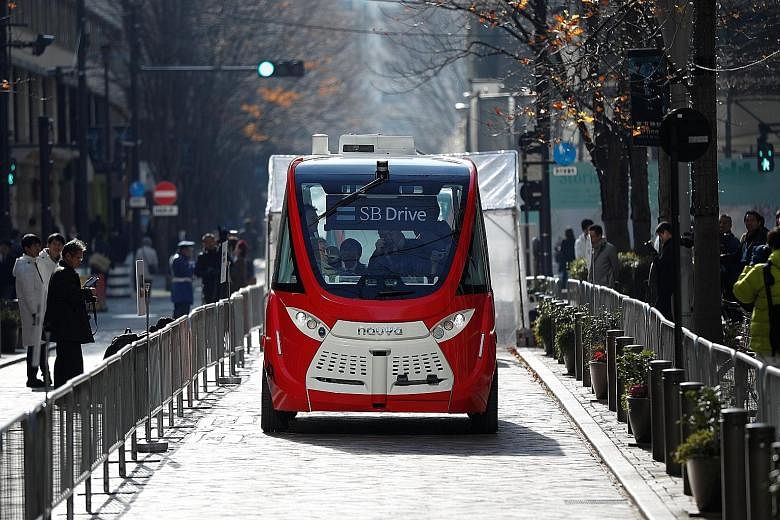There are only a few things that everybody in Silicon Valley agrees upon, and one of them is that driverless cars are the future.
Companies everywhere are rushing towards this great prize, and that has never been as clear as this month when the Valley was transfixed by a high-profile court case over the alleged theft of self-driving trade secrets featuring Uber and Waymo.
Because of this unanimity of opinion, there is relatively little discussion of the obstacles that will stand in the way of self-driving cars. Between now and the day that they whizz around everywhere, what will go wrong?
I found myself thinking about this the other night when I was cycling home and met a self-driving car trying to cross a six-way intersection. It was doing just fine, until it saw me. It suddenly pulled to a halt about 6m away, in the middle of the intersection, even though there was no one else around.
I looked at it, it looked at me. My bike lights flashed. Eventually, it moved on, perhaps because its human passenger took over.
As self-driving cars become more common, so do the accidents: last year there were 27 in California involving autonomous cars, and this year there were four in January alone. None of these appears to be the cars' fault, though it's hard to be entirely certain, because the accidents are all self-reported by the companies doing the testing.
Yet even as the number of autonomous cars on the road multiplies, there is still no serious discussion of their shortcomings. After writing about these vehicles for the past few years, there are five problems in particular I believe we should pay more attention to.
First, autonomous cars do not play well with others, particularly human drivers. The cars' jerky, cautious motion tends to befuddle those around them. The accident reports show this again and again: drivers of other vehicles often misread the robot car's intentions, resulting in collision.
Second, we will struggle to trust these machines. Think of a passenger aircraft. Thanks to autopilot systems, most planes are now capable of flying themselves. But they still have human pilots, who provide psychological reassurance to passengers and act as a back-up if anything goes awry.
Self-driving cars, too, may need human guidance for much longer than their creators imagine.
Third, the regulatory environment for self-driving cars, which is something of a free-for-all, is unlikely to remain as permissive as it is today.
In the United States, legislation that would legalise autonomous vehicles across the country has been held up in Congress, with no sign of when it might make its way to a vote. Individual states, such as California, Arizona and Florida, have highly permissive rules for testing but a national law would be necessary before the cars could operate across the country.
Fourth, there is a risk that autonomous cars will not get smart enough, fast enough to operate across a broad geographic range.
In the next few years, self-driving cars will be used in specific neighbourhoods or along specific routes, which is how many companies are testing them today. But if they are not able to quickly outgrow this phase, that would undercut much of their economic rationale.
Finally, the boom in autonomous car research has been fuelled by a kind of economic exuberance. An era of easy money has helped fund the great science project that is self-driving cars.
The sector is highly dependent on this funding to continue, because none of the current technology is economically viable. In the event of a financial shock, the autonomous future could start to look very far away.
Like all big disruptions, it's impossible to foresee exactly how or when self-driving cars will have an impact. Are they on the brink of a huge transformation, like the smartphone was 15 years ago? Or are they more like nuclear fusion, a grand idea that has never quite worked out?
Silicon Valley is certain that it is the former, but this is a place that runs on enthusiasm, not realism.
FINANCIAL TIMES

